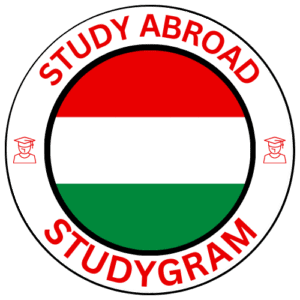In early November 2025, a delegation from Semmelweis University, led by Vice‑Rector for International Studies Dr. Alán Alpár, visited Sun Yat‑Sen Memorial Hospital (SYSMH) in Guangzhou and Shanwei. The trip underscored a growing, long‑term collaboration that will sharpen both institutions’ research, education, and clinical capabilities.
Why a Partnership Between Hungary and China Matters
Semmelweis University, located in Budapest, is a renowned center for medical science with a strong emphasis on translational research. Sun Yat‑Sen Memorial Hospital, the oldest Western‑style medical facility in China, boasts cutting‑edge oncology and immunology expertise. By joining forces, the two universities can tackle high‑impact medical challenges that cross borders—especially those linked to complex diseases such as cancer.
Aligning Shared Scientific Vision
The joint Mission and Vision Statements highlighted four core areas of shared interest: translational oncology research, advanced immunotherapy, clinical education, and technology transfer. These areas dovetail with Semmelweis’ flagship programs in molecular medicine and with SYSMH’s expertise in innovative cancer therapies.
Both institutions also value cross‑disciplinary collaboration. For instance, the organizers announced plans for a joint laboratory dedicated to immune‑cell profiling techniques, which will draw researchers from internal medicine, pathology, and bioinformatics.
The Milestone Memorandum of Understanding
During the 190th Anniversary Celebration of SYSMH in Guangzhou, the two parties signed a Memorandum of Understanding (MoU). The MoU formalizes a multi‑layer partnership, stipulating collaborative research, joint funding applications, and student mobility. It also establishes a governance framework that will guarantee transparency and accountability throughout the partnership’s lifespan.
Key Provisions of the MoU
- Research Collaboration: Co‑proposed grants, joint publications, and shared datasets.
- Education & Training: Reciprocal student exchange programs, short clinical clerkships for Hungarian students in Shenzhen, and faculty visits to Sun Yat‑Sen University.
- Technology Transfer: Access to clinical trial infrastructure and the digital pathology platform developed by SYSMH.
- Ethics & Governance: A shared ethics committee to oversee cross‑border patient studies.
Yesterday’s ceremony was witnessed by senior leaders from both universities and local authorities, signaling broad endorsement of international academic cooperation.
Scientific Highlights of the Visit
Beyond formal agreements, the delegation seized opportunities to engage in scientific sessions that reinforced the partnership’s research focus.
The Golden Bay Summit on Cancer Immunotherapy
In Shanwei, Semmelweis scholars Dr. Alán Alpár and Dr. Gábor Varga presented on recent breakthroughs in cancer immunotherapy. Their talks explored the interface between tumor microenvironment and immune checkpoint blockade—domains where Sun Yat‑Sen’s clinical trials have already produced promising results. The exchange cemented plans for joint pre‑clinical studies to validate new immunotherapeutic agents.
Speaking at the summit, Dr. Varga emphasized the importance of cross‑cultural research teams, stating, “The synergy between Hungarian translational methods and Chinese clinical trial experience opens unprecedented avenues for patients worldwide.”
Future Joint Publications and Funding
During informal dinner sessions, research teams drafted a list of potential collaborative projects: a multi‑center study on metastatic breast cancer biomarkers, a neuroimaging study on Parkinson’s disease progression, and a surveillance program for antimicrobial resistance. These projects will serve as a foundation for applying to European Horizon 2020 and Chinese National Natural Science Foundation grants.
Educational Exchanges: Bridging Distance, Building Competence
Student preparation is a pillar of the partnership. Both institutions agreed to orient exchange programs that address practical clinical training in diverse settings.
Clinical Clerkships for Hungarian Students
In the next academic year, Hungarian medical students will be able to complete a 12‑week clinical clerkship at SYSMH. They will work directly in oncology wards, learning about integrated care models used across Chinese health systems—an experience they can later bring to Hungarian hospitals.
Faculty Mobility & Knowledge Transfer
Semmelweis’ faculty may participate in a 4‑week visiting assignment at Sun Yat‑Sen University, providing workshops on research data analytics and patient‑centered care frameworks. Similarly, SYSMH professors will travel to Budapest to engage in seminars focused on epidemiological modeling.
Benefits to the Broader Healthcare Community
When the partnership reaches fruition, it promises tangible benefits for patients, healthcare professionals, and policy makers on both sides of the world. Combining Hungarian methodological rigor with Chinese clinical volume will speed translation of laboratory findings into patient‑directed therapies. It will also produce dual‑trained clinicians who can navigate international regulatory landscapes and patient diversity.
Improved Global Health Outcomes
By sharing expertise in oncology and immunology, the collaboration seeks to reduce time‑to‑treatment disparities for complex cancers. Shorter clinical trial cycles, accelerated regulatory approvals, and cost‑effective therapies are expected outcomes.
How You Can Get Involved
If you are a student, researcher, or professional interested in this partnership, several avenues are open for participation:
- Apply for a joint research position – Researchers can explore available projects by visiting the Semmelweis research portal.
- Join the student mobility program – International students can find detailed application guidelines on the international mobility page.
- Attend upcoming seminars – Keep up with Semmelweis’ event calendar at Semmelweis News.
- Discover opportunities for joint training at Sun Yat‑Sen – Faculty members can learn about visiting scholar programs via the SUNY website or by direct contact.
These steps are essential to building a practice environment that draws from the best of both European and Asian research ecosystems.
Looking Ahead: A Sustained Commitment
Both institutions expressed confidence that the partnership will deepen over the coming years, paving the way for additional joint initiatives, including clinical trials for new drugs and shared digital health platforms. The foundation laid during the November visit signals a strategic shift toward a more integrated, patient‑centric international medical community.
Get Started Today
Explore international mobility options at Semmelweis University, or consider enrolling in a joint research program that taps into world‑class expertise in oncology and immunology. Knowledge exchange, clinical collaboration, and academic innovation await those who take the first step.
For more details on collaboration opportunities, visit the Semmelweis International Relations page and stay updated on forthcoming events and announcements.

